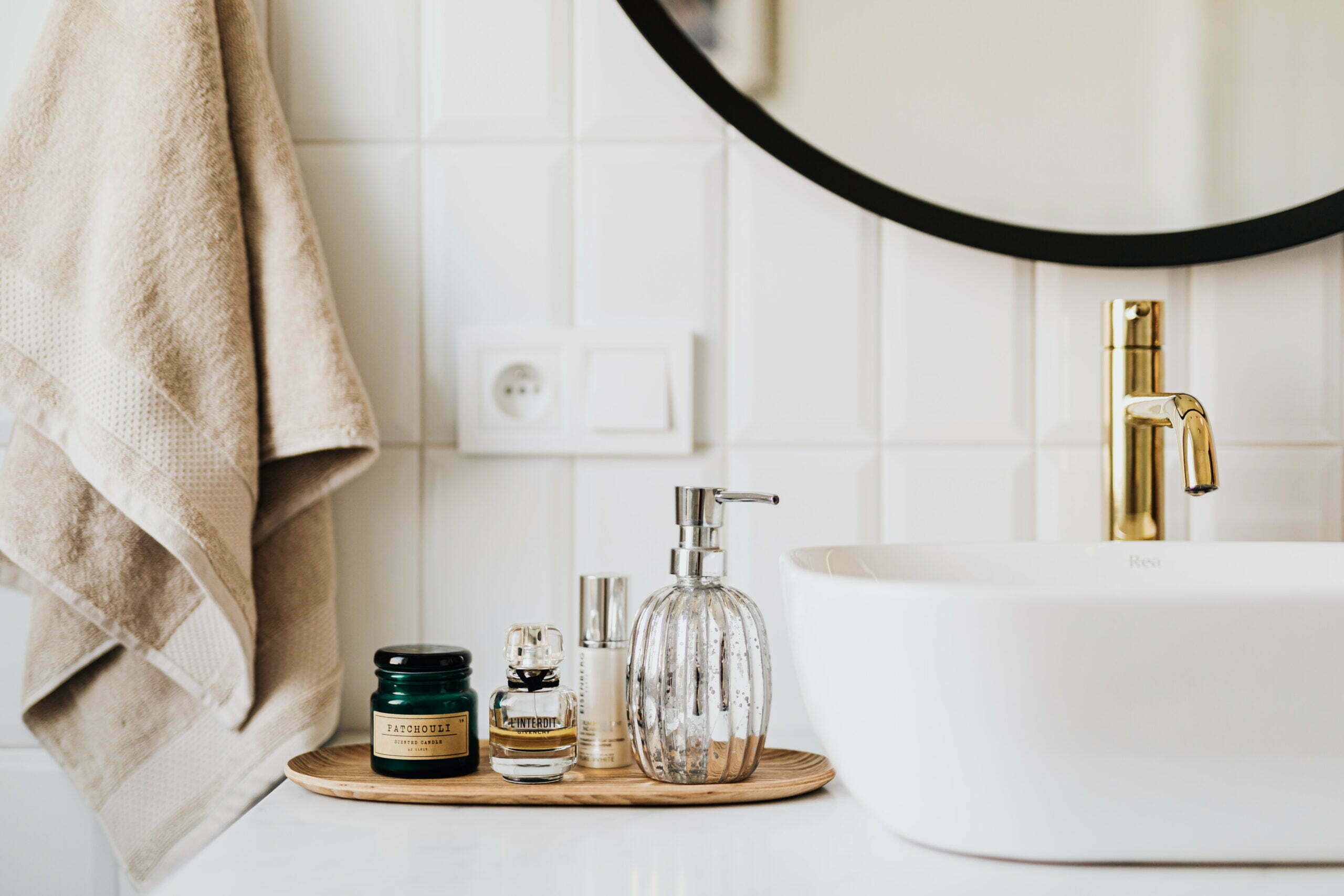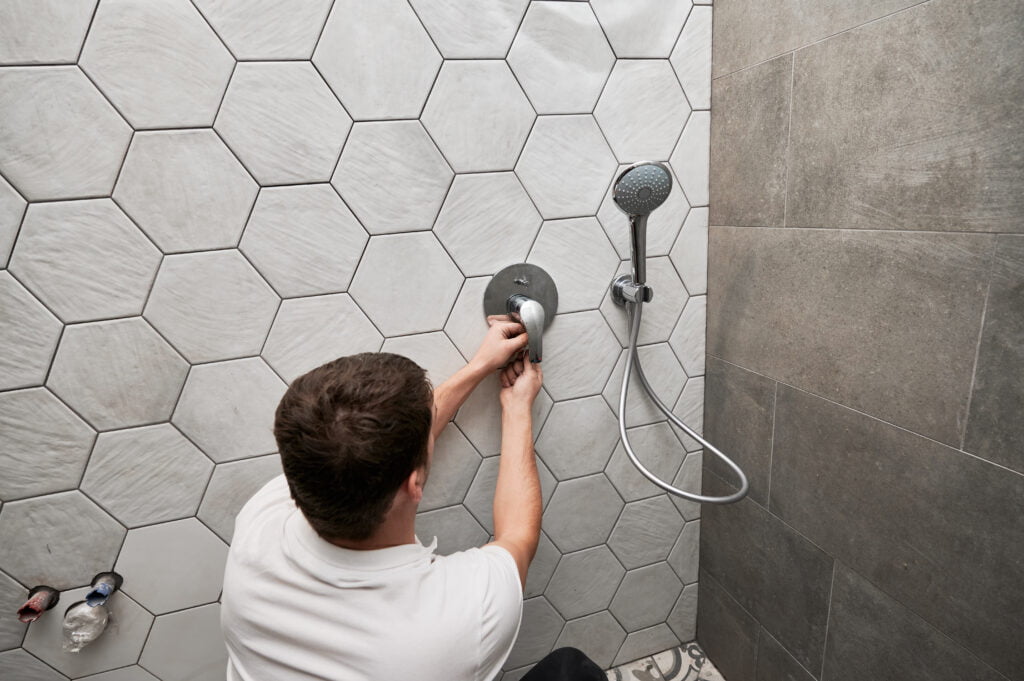So, you’ve decided it’s finally time to give your bathroom a much-needed makeover. Exciting! But amidst the excitement, a burning question lingers in your mind: how long is this whole remodeling process going to take? Well, fret not, because in this article, we’ll be exploring the average timeline for a bathroom remodel, giving you a realistic estimate so you can plan accordingly. No more wondering and waiting in anticipation, let’s dive right into the world of bathroom renovations.
Factors that affect the timeline
Size of the bathroom
The size of your bathroom plays a significant role in determining how long the remodeling process will take. A smaller bathroom may take less time to complete since there is less square footage to work on. On the other hand, a larger bathroom will naturally require more time and effort to remodel due to the increased area that needs to be addressed. It’s important to consider the size of your bathroom and factor it into your overall timeline expectations.
Scope of the remodel
The scope of your bathroom remodel can vary greatly depending on your goals and vision for the project. Are you simply looking to update a few key elements, such as the fixtures and flooring? Or are you planning a complete overhaul, including plumbing and electrical system updates, structural changes, and a total redesign? The more extensive the remodel, the longer it will likely take to complete. It’s crucial to have a clear understanding of the scope of your project before setting your timeline expectations.
Existing condition of the bathroom
The existing condition of your bathroom can also impact the remodeling timeline. If your bathroom is in relatively good shape and only requires minor cosmetic updates, the process will generally be quicker. However, if your bathroom has outdated plumbing, electrical issues, or structural problems, these issues will need to be addressed before any cosmetic changes can occur. Addressing these underlying issues can add time to the overall timeline but is essential for a successful and long-lasting bathroom renovation.
Permitting process
Another factor that can affect the timeline of your bathroom remodel is the permitting process. Depending on where you live and the specific regulations in your area, you may need to obtain permits from the local government before beginning your project. These permits ensure that the project meets safety standards and building codes. The time it takes to secure these permits can vary, ranging from a few days to several weeks or even months. It’s crucial to research the permitting requirements in your locality and factor in the potential time delay.
Availability of materials and fixtures
The availability of materials and fixtures can also impact the timeline of your bathroom remodel. If you have specific products or designs in mind, it’s important to check their availability before starting the project. Some materials or fixtures may need to be ordered in advance or may have longer lead times. In such cases, you may need to adjust your timeline accordingly, allowing for the additional time it takes to source and receive these items. Planning ahead and considering the availability of materials can help ensure a smoother and more timely remodeling process.
Planning and design phase
Hiring a professional
When embarking on a bathroom remodel, hiring a professional can significantly impact the timeline. Professionals have experience and expertise in handling such projects, which allows for a more streamlined and efficient process. They can help with everything from design planning to selecting the appropriate materials and fixtures. By entrusting your project to a professional, you can save time and avoid common mistakes that may prolong the remodeling process.
Setting a budget
Before diving into the planning and design phase, it’s important to establish a budget for your bathroom remodel. Setting a budget helps you determine what is feasible for your project and prevents scope creep that may prolong the timeline. By having a clear understanding of your financial limitations, you can work with your professional and select materials, fixtures, and design options that align with your budgetary constraints. This proactive approach will help prevent potential delays caused by financial constraints down the line.
Creating a design plan
Creating a design plan for your bathroom remodel is crucial for a successful and efficient renovation. This involves determining the layout, selecting fixtures and materials, and visualizing the final result. Taking the time to plan out all the aspects of your remodel ensures that you have a clear vision and minimize any potential revisions during the project. Having a well-thought-out design plan will help your professional execute the remodel more effectively and reduce the risk of unexpected delays.
Selecting materials and fixtures
The selection of materials and fixtures is an exciting part of the planning and design phase. However, it’s important to consider the availability of these items when setting your timeline expectations. Some materials or fixtures may need to be ordered in advance, especially if they are custom-made or not readily available. It’s essential to allow for the additional time it takes to source and receive these items. Working closely with your professional and selecting materials and fixtures early on can help ensure a smoother and more efficient remodeling process.

Demolition and preparation
Clearing the space
Before the actual remodeling work can begin, the first step is to clear the space. This involves removing any furniture, accessories, and personal belongings from the bathroom. Clearing the space allows for easier access and prevents any potential damage to your belongings during the renovation process. Depending on the size of your bathroom and the number of items you have, this step can take a few hours to a full day.
Removing fixtures and appliances
Once the space is cleared, the next step is to remove the existing fixtures and appliances. This includes removing the toilet, sink, bathtub or shower, and any other built-in features. The time it takes to remove these items will depend on their complexity and the condition they are in. Older fixtures may require more effort and time to uninstall, especially if they are rusted or tightly secured. It’s important to hire experienced professionals or consult DIY resources to ensure the proper removal of these fixtures without causing any damage.
Inspecting and repairing plumbing and electrical systems
After the fixtures and appliances are removed, it’s an opportune time to inspect the plumbing and electrical systems in your bathroom. This is especially crucial if your remodel involves updating or relocating these systems. Inspecting the plumbing and electrical systems helps identify any existing issues, such as leaks, faulty wiring, or outdated components. If any repairs or updates are necessary, it’s important to address them promptly to avoid any future complications. The time it takes to inspect, repair, or update these systems will depend on their current condition and the extent of the changes planned for your bathroom remodel.
Addressing structural issues
During the demolition and preparation phase, it’s also essential to address any structural issues that may arise. These issues can include water damage, mold, rotting wood, or weak supports. Identifying and rectifying structural issues is crucial for the long-term stability and safety of your bathroom. Repairing these problems may require additional time and effort, but it’s important not to neglect them. Consulting with professionals or contractors who specialize in structural repairs can help ensure that these issues are properly addressed, minimizing the risk of future complications.
Installation phase
Installing new plumbing and electrical systems
Once the demolition and preparation phase is complete, the installation phase can begin. If your remodel involves updating or relocating plumbing or electrical systems, this is the time to install the new components. Hiring qualified professionals or working closely with experienced contractors is vital to ensure that these systems are installed correctly and meet all relevant codes and safety standards. The time it takes to install new plumbing and electrical systems will depend on the complexity of the changes, the size of your bathroom, and the availability of the necessary materials.
Laying the groundwork for flooring and walls
With the major systems in place, the next step is to lay the groundwork for the flooring and walls. This may involve installing subflooring, waterproofing membranes, and any additional layers necessary for your chosen flooring material. Similarly, if your remodel involves changing the walls, this is when the necessary framing, insulation, and drywall installation would take place. The time required for these tasks will depend on the size of your bathroom, the intricacy of the chosen flooring and wall materials, and the expertise of the professionals working on your project.
Installing fixtures and appliances
Once the groundwork is complete, you can begin installing the fixtures and appliances in your bathroom. This includes setting up the toilet, sink, bathtub or shower, cabinets, and any other built-in features. The time it takes to install these items will depend on their complexity, the design choices you have made, and the skill level of the professionals handling the installation. It’s important to work closely with your contractor or professionals to ensure that the fixtures and appliances are installed correctly and function as intended.
Applying finishes and final touches
After the fixtures and appliances are in place, the final step in the installation phase is to apply finishes and add the final touches to your bathroom. This may involve painting the walls, installing lighting fixtures, adding mirrors and other accessories, and any other finishing tasks necessary to complete your desired aesthetic. The time required for these tasks will depend on the size of your bathroom, the complexity of the finishes and final touches, and the efficiency of the professionals working on your project.

Final inspections and clean-up
Scheduling inspections
After the installation phase is complete, it’s important to schedule final inspections to ensure that everything meets the necessary safety and building code requirements. These inspections may be conducted by local government officials or third-party inspectors, depending on the regulations in your area. Scheduling the inspections in a timely manner is crucial to avoid any potential delays in completing your remodel. Working with your contractor or professionals to ensure that all necessary inspections are scheduled and passed successfully is important to maintain the project’s timeline.
Addressing any necessary corrections
In some cases, inspections may identify certain corrections or adjustments that need to be made to bring your bathroom remodel in line with the required regulations. It’s essential to address these corrections promptly to avoid any potential future issues and ensure the safety and compliance of your newly remodeled bathroom. The time it takes to make these corrections will depend on the nature and extent of the required changes. Working closely with your contractor or professionals is crucial to swiftly address these corrections and maintain the overall timeline of your remodel.
Cleaning up the construction area
Once all inspections are successfully passed and any necessary corrections are made, the final step is to clean up the construction area. This involves removing any debris, leftover construction materials, and dust from the remodeling process. Thoroughly cleaning the area ensures that your remodeled bathroom is ready for use and free from any potential hazards or inconvenience. The time required for cleanup will depend on the size of your bathroom and the extent of the remodeling work that was done. Hiring professional cleaners or allocating sufficient time for thorough cleaning yourself will help ensure a clean and functional final result.
Conclusion
Remodeling a bathroom can be an exciting and transformative project, but it’s important to consider the various factors that can affect the timeline. The size of your bathroom, the scope of the remodel, the existing condition of the space, the permitting process, and the availability of materials and fixtures all play a role in determining how long the project will take. Planning and design are crucial phases that involve hiring professionals, setting a budget, creating a design plan, and selecting materials and fixtures. The demolition and preparation phase includes clearing the space, removing fixtures and appliances, inspecting and repairing plumbing and electrical systems, and addressing any structural issues. The installation phase encompasses installing new plumbing and electrical systems, laying the groundwork for flooring and walls, installing fixtures and appliances, and applying finishes and final touches. The final inspections and clean-up phase involves scheduling inspections, addressing necessary corrections, and cleaning up the construction area. By considering these factors and following a systematic approach, you can ensure a successful and timely bathroom remodeling experience.



